Chitosan Filtration Tower
Drip-Drop is a project developed in the Digital Matter studio with students Abhishek Sharma, Ibrahim Kukner and Zackary Bryson. The project looks at the issues related to water scarcity and the lack of adequate solutions to treat polluted water. Using Chitosan, the second most abundant material in the world, derived from crustaceans, insects and mushrooms, Drip-Drop utilizes the material’s many beneficial properties to treat water. 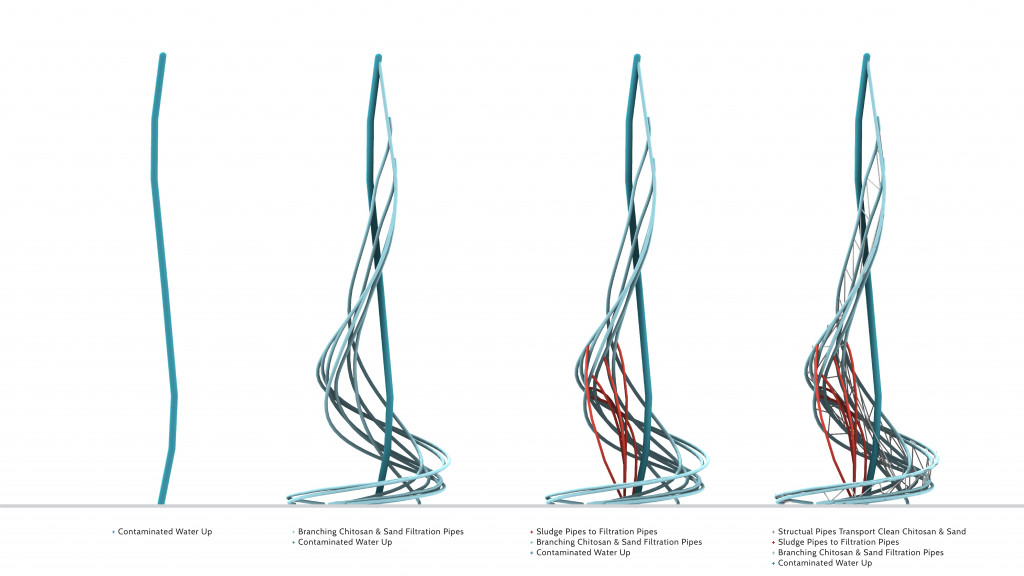 The project addresses the ways in which water in treated within an urban context. This water tower is designed to treat the grey water from a multiple block radius. It draws water up the main pipe, which also serves as the main structural column of the tower, and the water is then sent back down through pipes that branch out, each one consisting of its own chitosan filter, in order to distribute the load of filtration. Once the chitosan is saturated with pollutants, the powder is then drawn out using sludge extraction pipes and the chitosan is replaced.
The project addresses the ways in which water in treated within an urban context. This water tower is designed to treat the grey water from a multiple block radius. It draws water up the main pipe, which also serves as the main structural column of the tower, and the water is then sent back down through pipes that branch out, each one consisting of its own chitosan filter, in order to distribute the load of filtration. Once the chitosan is saturated with pollutants, the powder is then drawn out using sludge extraction pipes and the chitosan is replaced.
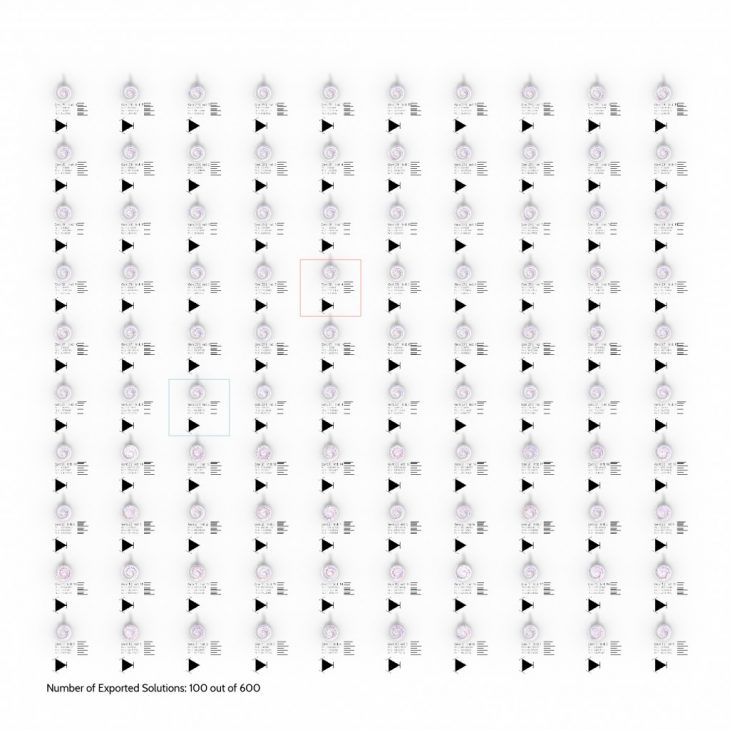
Catalogue showcasing the 2 optamized structures, as well as the first two generations and the last three.
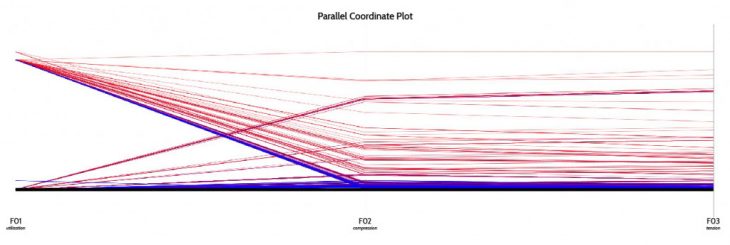
The graph shows the relationship of each iterations run through the solver. Each value was set to be minimized, therefore the bottom is where the best results are for each fitness value. The black line at the bottom shows generation 27, iteration 12 which is the best solution for each fitness value.

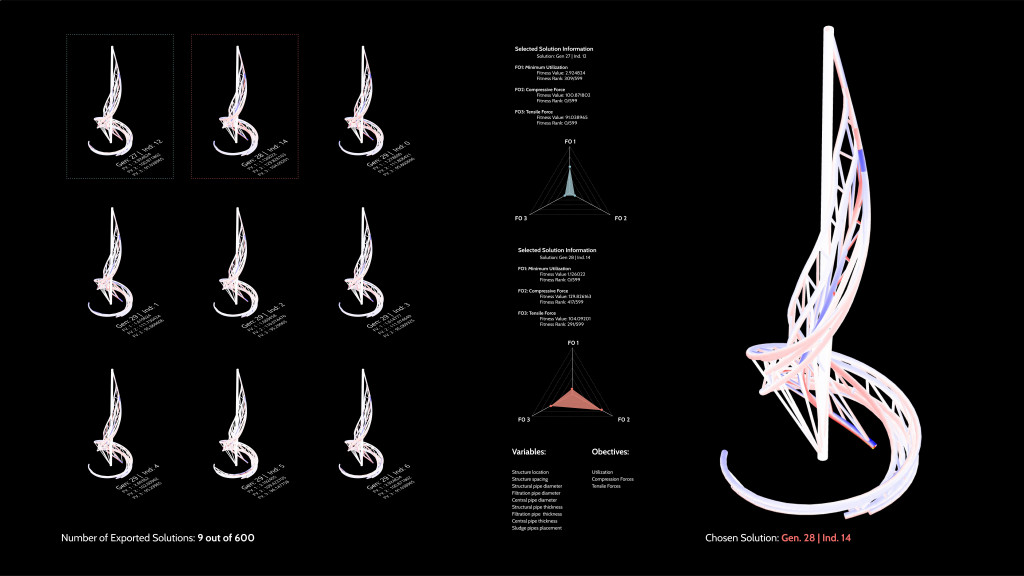
In order to improve the structal proporties of the tower, it was decided to construct a lattice strcutre between the pipes. Using Karamba the tower was analyzed prior to adding a secondary structure and it was found that the tower would not stand on its own under self-weight. After adding the lattice structure, major imporvement was oserved and would stand on its own when gravity loads were applied but not under latteral loading (wind). Wallacei, a evolutionary multi-objective optimization engine was used in order to minimize the utilization, compression and tension for all the elements in the tower. After 600 interations (30 generations of 20 itterations) it was found that the solver had found 2 optimized placement for the structure, one optimized for utilization and the other for tension and compression. The structural arrangement that was chosen is the one with minimized utilization since it already takes into account compression and tension as well as the bending taking places throughout the structure.
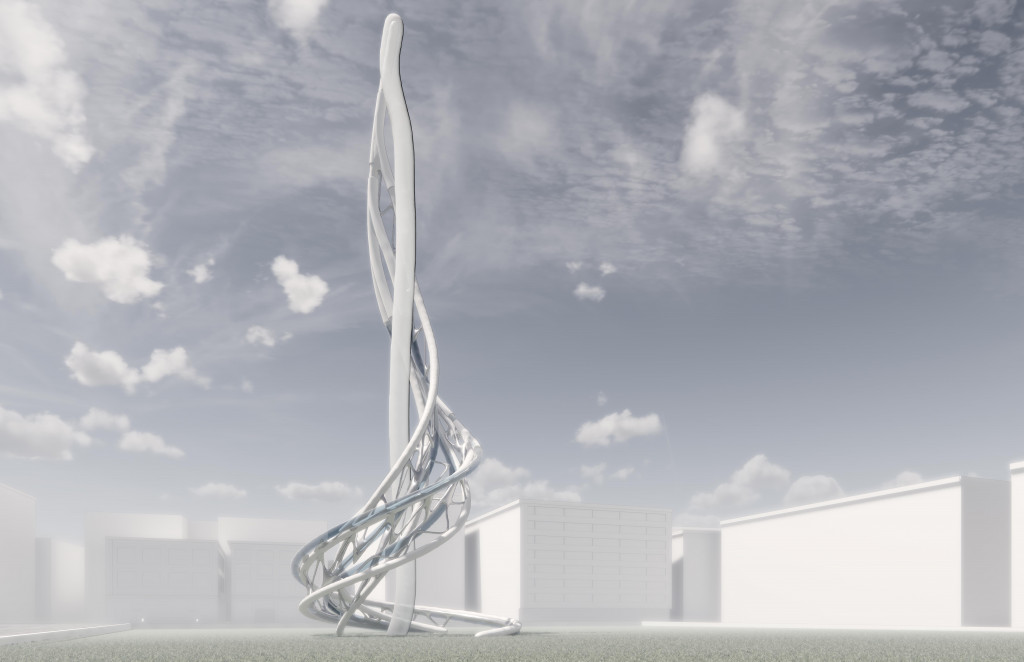
Genetic Optimization // Drip-Drop is a project of IaaC, Institute for Advanced Architecture of Catalonia
Developed at Master in Advanced Architecture in 2020 by:
Student: Zackary Bryson
Faculty: Rodrigo ?Aguirre
